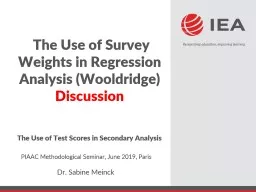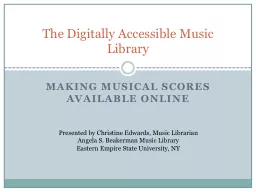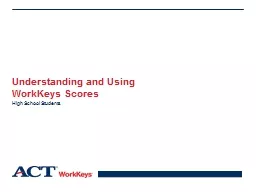PPT-The Use of Test Scores in Secondary Analysis
Author : tatiana-dople | Published Date : 2019-11-18
The Use of Test Scores in Secondary Analysis PIAAC Methodological Seminar June 2019 Paris Dr Sabine Meinck The Use of Survey Weights in Regression Analysis Wooldridge
Presentation Embed Code
Download Presentation
Download Presentation The PPT/PDF document "The Use of Test Scores in Secondary Ana..." is the property of its rightful owner. Permission is granted to download and print the materials on this website for personal, non-commercial use only, and to display it on your personal computer provided you do not modify the materials and that you retain all copyright notices contained in the materials. By downloading content from our website, you accept the terms of this agreement.
The Use of Test Scores in Secondary Analysis: Transcript
Download Rules Of Document
"The Use of Test Scores in Secondary Analysis"The content belongs to its owner. You may download and print it for personal use, without modification, and keep all copyright notices. By downloading, you agree to these terms.
Related Documents














